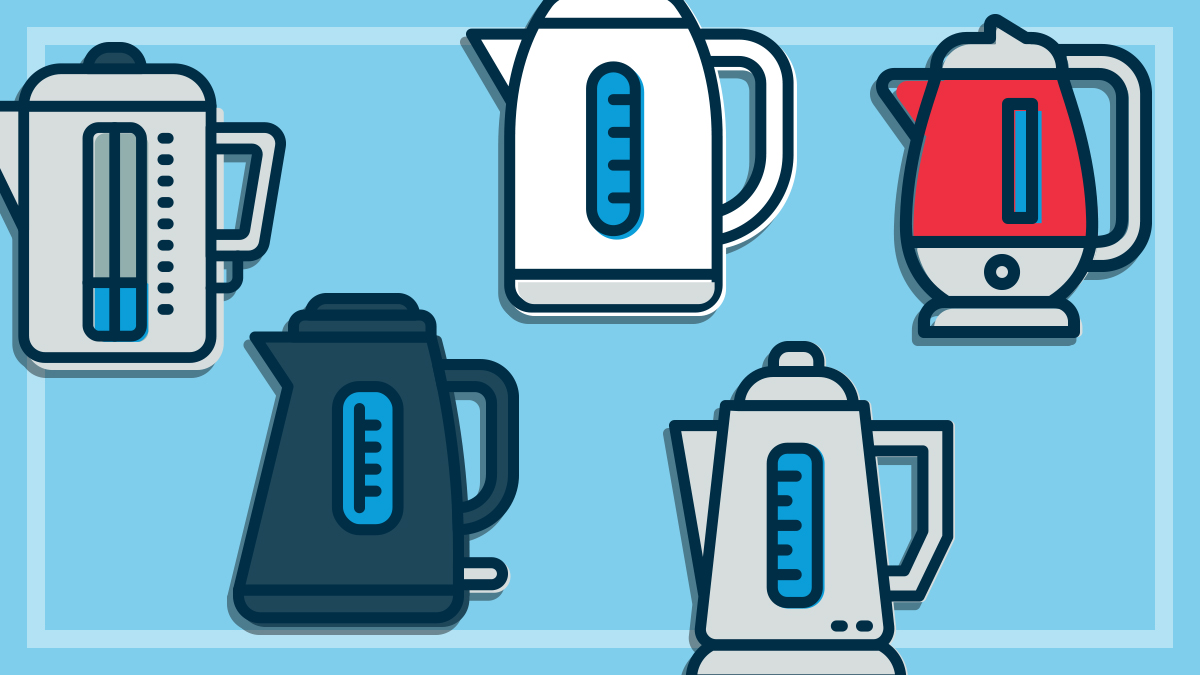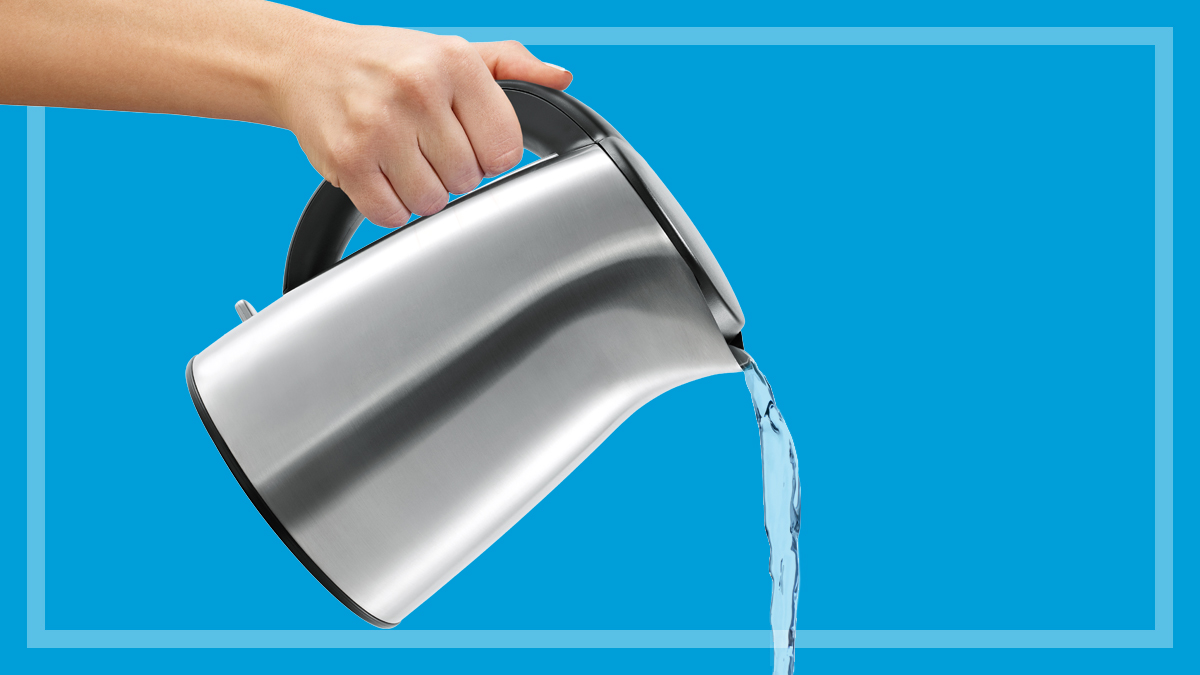Get our independent lab tests, expert reviews and honest advice.
What to look for in a new kettle

Kettles are really quite simple appliances, but manufacturers are continually adding bells and whistles. Do you need to control the exact temperature of your water (say, for brewing specialty teas) or do you just need hot water?
On this page:
- Types of kettles
- Key features in a kettle
- Do kettles use much energy?
- Preset temperatures and temperature settings
- Are 'quiet boil' kettles really quiet?
- Can kettles add a weird taste to boiled water?
- How much do kettles cost?
- Recycling your old kettle
For most people, a kettle really only has to do one thing – and that’s boil water. We test kettles to make sure they can at least make a cuppa, but there are a few other things we look for in a good kettle.
So which one should you choose when it comes time to buy? We’ll boil it all down for you.
Types of kettles
It’s mostly a matter of personal preference when choosing what type of kettle you’re after. We’ve tested three types in our labs:
- Electric
- Stovetop
- Instant
Electric kettles
This is by far the most popular type of kettle – a benchtop appliance with a built-in heating element that is most commonly corded with a base. You’ll need access to an electrical outlet to use one, but they are usually faster to boil than other types and have an automatic shut-off, when the temperature is reached. They also come in a range of colours and designs to match your kitchen aesthetic.
Stovetop kettles
Stovetop kettles are a more traditional design. As the name suggests, they sit on your stovetop and the cooktop is used to heat the water. They usually whistle to indicate the water has reached boiling point. The lids can be hard to remove, the handles might not be comfortable and there’s no auto switch-off, so you’ll need to pay closer attention when using a stovetop kettle. As for energy efficiency, they aren’t as good as an electric kettle. On gas or ceramic stovetops some heat is lost into the surrounding air, while an electric kettle tends to lose very little heat, so almost all the energy goes into boiling the water. However, on an induction cooktop a stovetop kettle will still be fairly energy-efficient, and will boil very quickly.
Instant kettles
These are also known as instant hot water dispensers. They are a benchtop appliance that heats water on demand – unlike traditional kettles that heat all the water inside, instant kettles only heat the water that’s being dispensed. This makes them faster to boil but they also take up more bench space than an electric kettle.
Key features in a kettle
Comfortable handle
The kettle should feel balanced and lightweight, even when full, and you should have enough finger room to avoid contact with the potentially hot surface of the kettle’s body. Look for a handle that’s thick enough to give a solid grip, but not so thick you can’t hold it securely.
Wide spout or lid
Lids should open easily and preferably be hinged so you won’t remove and lose them. A wide spout means you don’t always have to open the lid to fill the kettle.
Controls and indicators
Light-touch controls or a large switch make it easier to turn the kettle on and off, while indicator lights should be bright and obvious, so you can see them regardless of the light levels in your kitchen. Water level indicators should be easy to read from both sides, for both left- and right-handed use.
For a quieter model, a tone or an audible click to alert you that the water has boiled can be handy.
Non-slip base
The base should be non-slip and allow the kettle to be placed on it in any position (360°). It should also have a long enough cord so the kettle doesn’t have to be right next to the power point, and have room for cord storage underneath.
Style and finish
Kettles come in many designs, and many also come with matching toasters. The main finishes are stainless steel, plastic or glass, with many stainless steel models coated in various colours.
Each type has its own pros and cons: a stainless steel kettle may match your other appliances, but may show up fingerprints. A glass kettle looks sleek and modern, but in time you may see discolouration on the inner base, caused by mineral residue from the water. This means more frequent maintenance with bicarb or vinegar to keep it looking as good as new.
What about fancy designer features?
The features you’ll see in a more expensive model might include:
- more attractive finishes such as vividly coloured plastics or matte looks
- ‘dual wall’ styles that claim to be cooler to the touch
- different temperature settings (handy if you’re particular about the water temperature for specific types of tea)
- quiet boil
- constant or ‘instant’ boil (e.g. an electric urn that always heats)
- easy pouring functionality (for if you have weaker hands or arthritis, for example).
Do kettles use much energy?
Most electric kettles are not expensive to run. Boiling a full kettle a couple of times a day over the course of a year would set you back about $32, based on 40 cents per kWh.
To save money and energy, only boil as much water each time as you actually need. For most kettles the minimum level is about two cups – a bit of a waste if you’re just making one cup of tea or coffee, but still better than boiling a full kettle.
Preset temperatures and temperature settings
Some kettles can be set to a range of temperatures, which is handy if you’re particular about water temperatures for tea-making, or for when you just need very hot water rather than boiling (such as when filling a hot water bottle). Although it’s worth noting that our lab tests show that these different temperature settings aren’t always very accurate.
Are ‘quiet boil’ kettles really quiet?
Yes, they’re usually quieter than most other kettles. Kettles can be pretty noisy – we measure their noise when boiling and they can be anywhere from 47dB (reasonably quiet) to 65dB (about the same as a typical conversation).
We’ve found that models with a quiet boil feature can indeed be relatively quiet, but so can other kettles that don’t claim to have this feature.
As the kettle gets older, it’s possible that the quiet boil function may become less effective (as CHOICE members have told us). The noise from boiling comes from bubble formation on the inner walls of the kettle. Models with quiet boil usually have a special coating on the inside to change how the bubbles form (making them smaller) in order to reduce the noise, and this coating might wear off or become less effective over time.
Can kettles add a weird taste to boiled water?
We’ve had reports that some kettles, particularly plastic kettles, can give the boiled water a strange or unpleasant taste. A quick experiment in our lab with a cheap plastic kettle confirmed that this can indeed happen with water that has been left in the kettle and reboiled again and again. We don’t know if there’s anything more to this than just a plasticky odour, but it’s certainly worth avoiding.
Try to only fill the kettle with as much water as you need each time (good advice in any case – it’s more energy-efficient). If any boiled water is left over, pour it out before you refill the kettle. If the problem persists, it might be time to replace your plastic kettle, perhaps with a glass or metal-bodied model.
How much do kettles cost?
Kettles range in price from around $15 for a basic no-frills model to more than $200 for a high-end model. Our members tell us that cheap kettles can be reliable, and because so little was spent on it, expectations are generally low.
The most expensive kettle we’ve tested costs a staggering $529, and we weren’t impressed with its performance. As far as kettles are concerned, price is no indicator of performance.
Recycling your old kettle
Stainless steel kettles are more recyclable than models that might use a mixture of, say, glass and plastic. All kettles can be disposed of as e-waste so that materials in the electronic components can be retrieved and recycled. Most councils will have regular e-waste clean-up days so you can get rid of yours safely.






